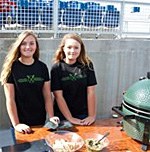65 Years of Specialty Food
 Special to Road Trips for Foodies
Special to Road Trips for Foodies
By Susan Segrest for Specialty Food Magazine
Following World War II, a whole generation who had served overseas returned with memories of foods and culture they had never before experienced. By the 1950s, many had formed importing companies to bring then-unknown products like preserves from Holland and biscuits from the U.K. to the U.S. market. A group of these importers gathered in 1952 and formed what would become today’s Specialty Food Association to help familiarize U.S. consumers with these exotic foods. Through the 50s and 60s, prosperity and increased travel helped expand and sophisticate American tastes for fine food products, helping to grow the specialty food industry.
In the early days of the Association and Fancy Food Shows, specialty foods were truly fancy—imports of Champagne and caviar were hallmarks of the field. Today, specialty foods include everything from regional favorites like frozen buttermilk biscuits to new innovations like maple water or superfood energy bars to, well, biodynamic bubbly and American caviar.
The innovation of suppliers and retailers over these past 65 years have helped the industry to shape American food culture. To get an idea of some of the transformations over the decades, here is a snapshot of evolving product categories, culinary trends, and more.
Then, Now, Next: Tracking the Evolution of Specialty Food Categories
1950s: Basic Condiments Rule
1960s: Coffee Drinking Declines
1970s: Sugar-Free Finds Wider Appeal
1980s: Specialty Cheeses Gain Traction
1990s: The Rise of Better-for-You Chips
2000s – Today: Organic, Local and Sustainable Foods Are Everywhere
The Consumer: Then and Now
In the 1950s, only three percent to five percent of consumers bought specialty foods, which they equated with upscale, exotic foods like caviar, pate and truffles. Today’s specialty food consumers are as likely to buy local, organic peanut butter as they are imported truffle-infused olive oil. According to the 2016 “Today’s Specialty Food Consumer Report,” published by the Specialty Food Association and Mintel, nearly 60 percent of consumers reported buying a specialty food or beverage in the past six months. Millennials are the core specialty food consumer and are using their purchases for both everyday meals and snacks as well as fun indulgences and entertaining.
Convenience Food: Then and Now
In the past six decades, convenience foods have taken many turns. In the post-war 1950s, TV dinners, canned foods, and cake mixes were making mom’s life easier. In the 1960s, “just add water” products took off with Taster’s Choice in the coffee mug and instant mashed potatoes on the stove. With the introduction of the microwave in the 70s and 80s, consumers could prepare their food even faster. Prepared food counters flourished in specialty food stores and premium supermarkets as time-pressed, overworked shoppers opted to pick up dinner to take home. Now, the height of convenience is online ordering and home delivery with services like Fresh Direct bringing groceries to the kitchen, apps like Seamless driving a world of restaurant take-out to the front door, and companies like Blue Apron, creating pre-made meal kits so that consumers can cook at home without the hassle of shopping.
(Image courtesy of Specialty Food Association)

















